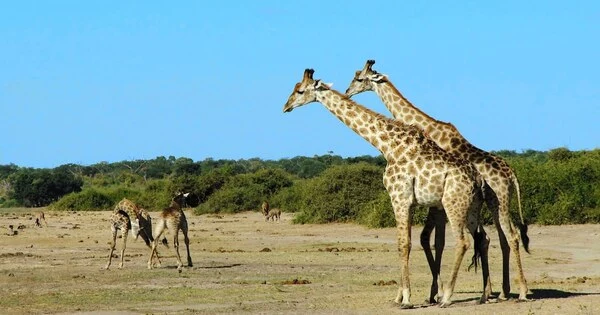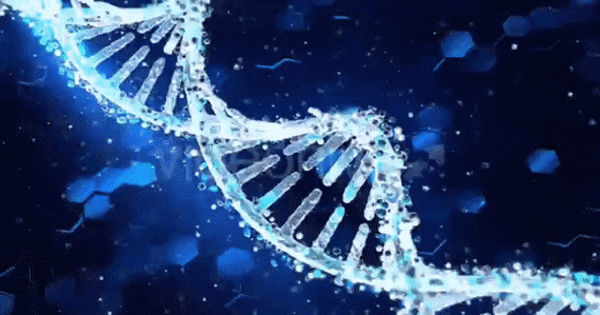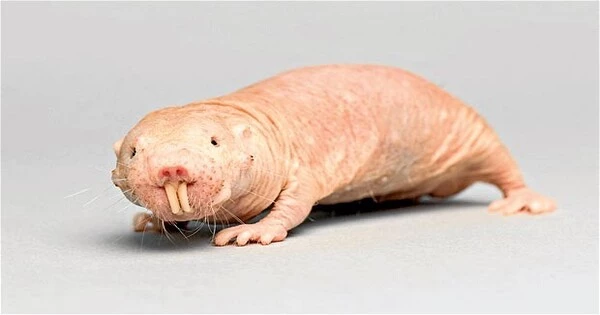Despite wide disparities in longevity and body mass, the number of mutations acquired by 16 species is similar across their lifetimes.
The first study to look at the accumulation of mutations in a wide range of animal species has put new light on long-standing questions over the significance of genetic changes in aging and cancer. Despite significant disparities in longevity and size, Wellcome Sanger Institute researchers observed that various animal species die with a similar number of genetic changes.
The study, which will be published in the journal Nature on April 13, 2022, examined the genomes of 16 different mammal species, ranging from mice to giraffes. The research verified that the slower the pace at which mutations occur, the longer the lifespan of a species, adding support to the long-held idea that somatic mutations play a role in aging.

Somatic mutations are genetic alterations that occur in all cells of an organism during its life. This is a natural process, with cells in people gaining 20 to 50 mutations per year. Most of these mutations are harmless, but some of them can set a cell on the path to cancer or hinder normal cell function.
Some scientists have suggested since the 1950s that these mutations may have a role in aging. However, the difficulties in observing somatic mutations have made research into this hypothesis problematic. Technological breakthroughs in recent years have finally permitted genetic changes to be seen in normal tissues, raising hopes for an answer to this topic. [1]
Another long-standing puzzle is Peto’s paradox. Because malignancies start from single cells, species with larger bodies (and thus more cells) should be at a far higher risk of developing cancer. However, the incidence of cancer in animals is unrelated to body size. Large-bodied animals are thought to have evolved superior cancer-prevention strategies. It is yet to be determined whether one such mechanism is a reduction in the accumulation of genetic alterations in their tissues.
In this study, Wellcome Sanger Institute researchers used novel tools to assess somatic mutation in 16 mammalian species spanning a wide range of lifespans and body sizes. ([2] This comprised samples from a variety of organizations, including the Zoological Society of London, and species such as humans, mice, lions, tigers, giraffes, and the long-lived, very cancer-resistant naked mole-rat.

To evaluate mutation rates in single intestinal stem cells, 208 intestinal crypts [3] from 48 individuals were used to create whole-genome sequencing.
The analysis of mutational patterns (or mutational signatures) revealed information about the processes at work. Despite their widely varied diets and life histories, the researchers discovered that somatic mutations accumulate linearly over time and are generated by comparable mechanisms in all animals, including humans.
The researchers’ discovery that the rate of somatic mutation was reduced as the longevity of each species rose gave evidence of the probable involvement of somatic mutations in aging.
“It was striking to observe a comparable pattern of genetic changes in species as dissimilar as a mouse and a tiger,” said Dr. Alex Cagan, first author of the study from the Wellcome Sanger Institute. The most intriguing part of the study has to be the discovery that lifespan is inversely proportionate to the rate of somatic mutation. This shows that somatic mutations may play a role in aging. However, other theories exist. It will be exciting to expand these investigations into even more diverse species, such as insects or plants, in the coming years. “

However, the hunt for an answer to Peto’s conundrum continues. After controlling for lifetime, the scientists discovered no significant relationship between somatic mutation rate and body mass, implying that other variables must be at work in larger animals’ ability to minimize their cancer risk relative to their size.
“To find a similar pattern of genetic changes in animals as different from one another as a mouse and a tiger was surprising. But the most exciting aspect of the study has to be finding that lifespan is inversely proportional to the somatic mutation rate. This suggests that somatic mutations may play a role in aging, although alternative explanations may be possible. Over the next few years, it will be fascinating to extend these studies into even more diverse species, such as insects or plants.”
Dr. Alex Cagan
The first author of the study from the Wellcome Sanger Institute said, “The fact that differences in somatic mutation rates seem to be explained by differences in lifespan, rather than body size, suggests that, while adjusting the mutation rate sounds like an elegant way of controlling the incidence of cancer across species, evolution has not actually chosen this path.” It is very feasible that each time a species expands to a bigger size than its forebears – as in giraffes, elephants, and whales – evolution will find a different solution to this challenge. To find out, we’ll need to conduct further in-depth research on these species.
Despite enormous disparities in longevity and body mass among the 16 species tested, the number of somatic mutations acquired throughout the course of each animal’s lifetime was quite similar. A giraffe is 40,000 times larger than a mouse, and a human lives 30 times longer, but the difference in the number of somatic mutations per cell at the end of life only differs by around a factor of three.
Animals frequently live far longer at zoos than they do in the wild, so our vets’ time is often spent dealing with illnesses connected to old age, “said Dr. Simon Spiro, ZSL (Zoological Society of London) wildlife veterinary pathologist. The genetic modifications discovered in this study suggest that diseases of old age would be comparable across a wide spectrum of mammals, whether old age begins at seven months or 70 years, and will assist us in keeping these animals happy and healthy in their later years.
Understanding the precise causes of aging is still an unanswered subject that is being researched. Aging is most likely caused by the accumulation of several sorts of harm to our cells and tissues over time, such as somatic mutations, protein aggregation, and epigenetic alterations. When the rates of these processes are compared among animals with vastly varying lifespans, it is possible to get insight into their function in aging.
Aging is a complex process, the result of numerous forms of molecular damage in our cells and tissues, stated Dr. Inigo Martincorena, senior author of the study from the Wellcome Sanger Institute. Since the 1950s, somatic mutations have been thought to contribute to aging, but investigating them has been difficult. With recent advancements in DNA sequencing technologies, we can now explore the roles that somatic mutations play in aging and a variety of disorders. It’s a fascinating and intriguing revelation that this wide variety of animals die with a comparable proportion of mutations in their cells. “
Notes:
- The Sanger Institute website has more information on the research of somatic mutations in healthy cells.
- The sequenced species include a black-and-white colobus monkey, a cat, a cow, a dog, a ferret, a giraffe, a harbor porpoise, a horse, a human, a lion, a mouse, a naked mole-rat, a rabbit, a rat, a ring-tailed lemur, and a tiger.
- Colonic crypts are anatomical structures found in the colon’s epithelium. Because all of the cells in a crypt are descended from a single stem cell, they are perfect for examining somatic mutation rates and patterns.
Reference: “Somatic mutation rates scale with lifespan across mammals” by Alex Cagan, Adrian Baez-Ortega, Natalia Brzozowska, Federico Abascal, Tim H. H. Coorens, Mathijs A. Sanders, Andrew R. J. Lawson, Luke M. R. Harvey, Shriram Bhosle, David Jones, Raul E. Alcantara, Timothy M. Butler, Yvette Hooks, Kirsty Roberts, Elizabeth Anderson, Sharna Lunn, Edmund Flach, Simon Spiro, Inez Januszczak, Ethan Wrigglesworth, Hannah Jenkins, Tilly Dallas, Nic Masters, Matthew W. Perkins, Robert Deaville, Megan Druce, Ruzhica Bogeska, Michael D. Milsom, Björn Neumann, Frank Gorman, Fernando Constantino-Casas, Laura Peachey, Diana Bochynska, Ewan St. John Smith, Moritz Gerstung, Peter J. Campbell, Elizabeth P. Murchison, Michael R. Stratton and Iñigo Martincorena, 13 April 2022, Nature.





